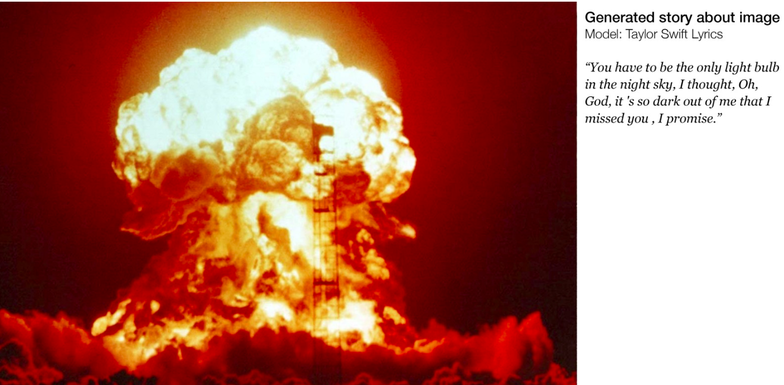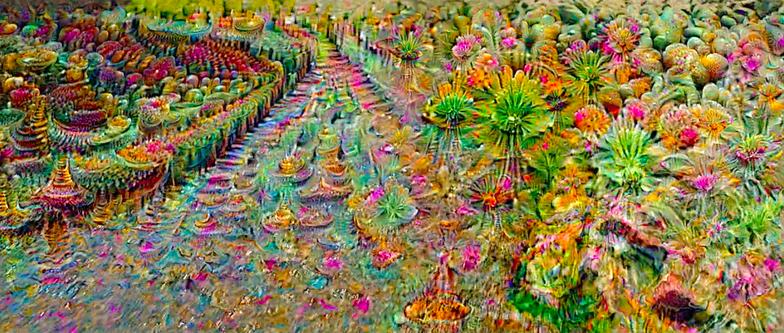"
Generating Stories About Images"
We built an AI using "lyrics" and "romance novels" as training data. We input images into this AI and have it describe the image's content. Unlike typical AI construction, we fed it "biased" training data, resulting in image descriptions humans wouldn't conceive. For this photo, we showed the image to an AI trained on Taylor Swift's lyrics and had it generate a description. For this painting, it produced the following: "In this night sky, you must be the only light bulb, I thought, ah, it's so dark, I really miss you."
Kida: Artificial intelligence is being used in various fields. What kind of people would you like to work with?
Samin: I want to work with people in design, advertising, music, games, film, and fashion. We want to help people in these fields quickly develop concepts and explore creative uses for artificial intelligence. To do this, we consistently share the various experiments we conduct and the latest trends in AI.
Unraveling Human Intelligence Through Artificial Intelligence
Kida: By the way, is it possible to have artificial intelligence express its own opinions? Ultimately, does it depend on the input?
Samin: Research on the brain by various scientists shows how much our human opinions and will are influenced by others. For example, your opinions on fashion are shaped by the people around you, advertising, and culture. "Opinions," "choices," and "will" aren't actually solely our own; they're formed by numerous external influences.
If an AI has a "personality," it would largely depend on its developers. What algorithms were used, and what kind of training was applied. To answer your question, it is possible, and it would depend on the input.
Kida: What motivates you to create various things using technology?
Samin: I'm not interested in technology itself. I'm fascinated by creating things, and technology is just a tool to do that quickly.
Kida: I've learned a lot. Thank you for today!
[After the Interview]
Using cutting-edge technology as a tool for expression
When people hear "artificial intelligence," they might think of cutting-edge technology that individuals can't easily handle. And the idea of using AI for something creative might sound downright daunting.
While researching AI trends, encountering his work and research was what led me to discover him. Until then, my impression of AI was that it aimed to replace tasks humans found tedious, like automatic language translation or self-driving cars. Seeing what he was trying to do changed that perspective.
What he's doing is asking the same question that has been asked of other technologies before: How can we use artificial intelligence as a tool for expression? For example, when the technology of "photography" was invented, people used it to gain a new means of expression. After acquiring the technology of "film," it became known among people as the medium of cinema. This interview makes me think that the same might be true for artificial intelligence.






